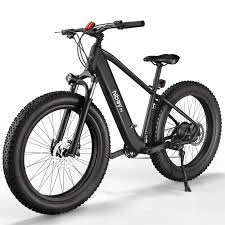
- Afrikaans
- Albanian
- Amharic
- Arabic
- Armenian
- Azerbaijani
- Basque
- Belarusian
- Bengali
- Bosnian
- Bulgarian
- Catalan
- Cebuano
- Corsican
- Croatian
- Czech
- Danish
- Dutch
- English
- Esperanto
- Estonian
- Finnish
- French
- Frisian
- Galician
- Georgian
- German
- Greek
- Gujarati
- Haitian Creole
- hausa
- hawaiian
- Hebrew
- Hindi
- Miao
- Hungarian
- Icelandic
- igbo
- Indonesian
- irish
- Italian
- Japanese
- Javanese
- Kannada
- kazakh
- Khmer
- Rwandese
- Korean
- Kurdish
- Kyrgyz
- Lao
- Latin
- Latvian
- Lithuanian
- Luxembourgish
- Macedonian
- Malgashi
- Malay
- Malayalam
- Maltese
- Maori
- Marathi
- Mongolian
- Myanmar
- Nepali
- Norwegian
- Norwegian
- Occitan
- Pashto
- Persian
- Polish
- Portuguese
- Punjabi
- Romanian
- Russian
- Samoan
- Scottish Gaelic
- Serbian
- Sesotho
- Shona
- Sindhi
- Sinhala
- Slovak
- Slovenian
- Somali
- Spanish
- Sundanese
- Swahili
- Swedish
- Tagalog
- Tajik
- Tamil
- Tatar
- Telugu
- Thai
- Turkish
- Turkmen
- Ukrainian
- Urdu
- Uighur
- Uzbek
- Vietnamese
- Welsh
- Bantu
- Yiddish
- Yoruba
- Zulu
Feb . 16, 2025 01:14 Back to list
27.5/29 "Color-Changing Carbon Fiber Mountain Bike 12 Variable Speed Mountain Bike Dirt Bike
Mountain biking cross-country (XC) offers a unique blend of adventure, skill, and endurance, fully immersing enthusiasts in both sport and nature. For those new to mountain bike XC, selecting the right gear is crucial to enhance performance and enjoyment. This guide aims to provide practical insights and professional advice to help you make informed decisions.
Investing in a good quality helmet and protective gear cannot be overstated when it comes to safety. An XC-specific helmet provides ample ventilation vital during strenuous rides, while gloves enhance grip and control and offer protection. Knee and elbow guards, though optional, are wise additions, especially for beginners who may be prone to falls. For performance and trustworthiness, maintaining your bike is key. Frequent checks on the brakes, gear system, and tires are mandatory. Clean the drivetrain regularly and ensure your tires are inflated to the recommended pressure before each ride. A well-maintained bike not only rides better but also lasts longer. Finally, the XC community itself is an invaluable resource. Joining a local mountain biking club or an online forum allows you to share experiences, seek advice, and often discover trails that are otherwise unknown. These platforms foster a sense of camaraderie and are a testament to the authenticity and shared passion within the sport. In conclusion, entering the world of mountain bike XC requires a thoughtful approach to gear and technique. By carefully selecting your bike and equipment, maintaining them diligently, and engaging with the community, you can elevate your riding experience. The journey is as rewarding as it is challenging, promising adventure at every trail and building a lifetime of memories.


Investing in a good quality helmet and protective gear cannot be overstated when it comes to safety. An XC-specific helmet provides ample ventilation vital during strenuous rides, while gloves enhance grip and control and offer protection. Knee and elbow guards, though optional, are wise additions, especially for beginners who may be prone to falls. For performance and trustworthiness, maintaining your bike is key. Frequent checks on the brakes, gear system, and tires are mandatory. Clean the drivetrain regularly and ensure your tires are inflated to the recommended pressure before each ride. A well-maintained bike not only rides better but also lasts longer. Finally, the XC community itself is an invaluable resource. Joining a local mountain biking club or an online forum allows you to share experiences, seek advice, and often discover trails that are otherwise unknown. These platforms foster a sense of camaraderie and are a testament to the authenticity and shared passion within the sport. In conclusion, entering the world of mountain bike XC requires a thoughtful approach to gear and technique. By carefully selecting your bike and equipment, maintaining them diligently, and engaging with the community, you can elevate your riding experience. The journey is as rewarding as it is challenging, promising adventure at every trail and building a lifetime of memories.
Latest news
-
The Ultimate Kids' Four-Wheeler Experience
NewsJul.09,2025
-
The Ultimate Guide to Mountain Bikes: Gear Up for Your Ride
NewsJul.09,2025
-
The New Age of Cycling: Electric Bikes for Every Rider
NewsJul.09,2025
-
The Best Kids Bicycles: Ride in Style and Safety
NewsJul.09,2025
-
The Best 3-Wheel Scooters for Kids: Fun, Safety, and Adventure
NewsJul.09,2025
-
Revolutionize Your Ride: Affordable Electric Bikes
NewsJul.09,2025
-
Finding the Perfect Mountain Bike for Every Rider
NewsJul.09,2025



